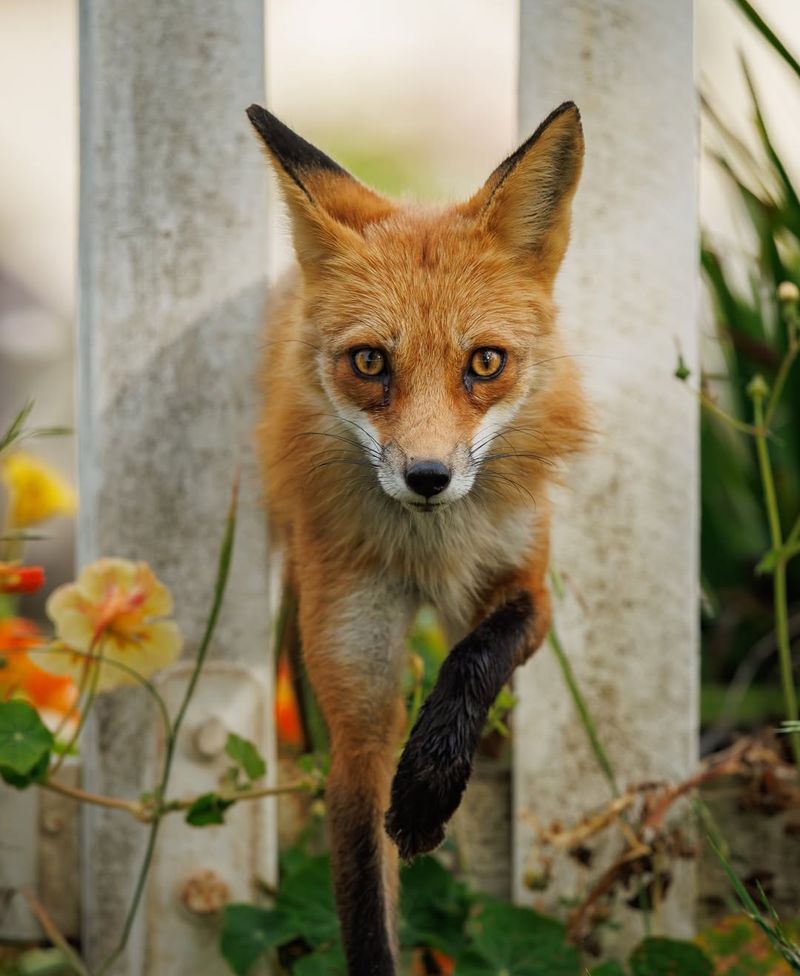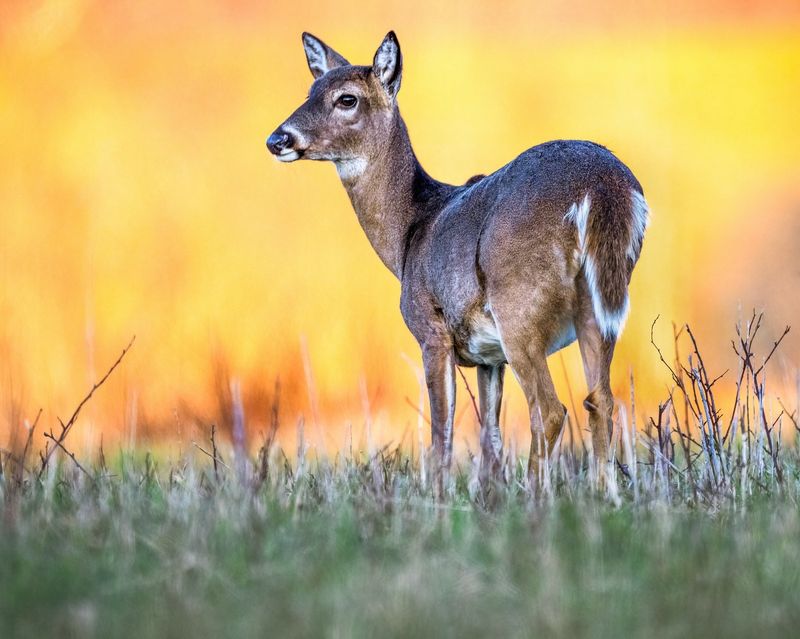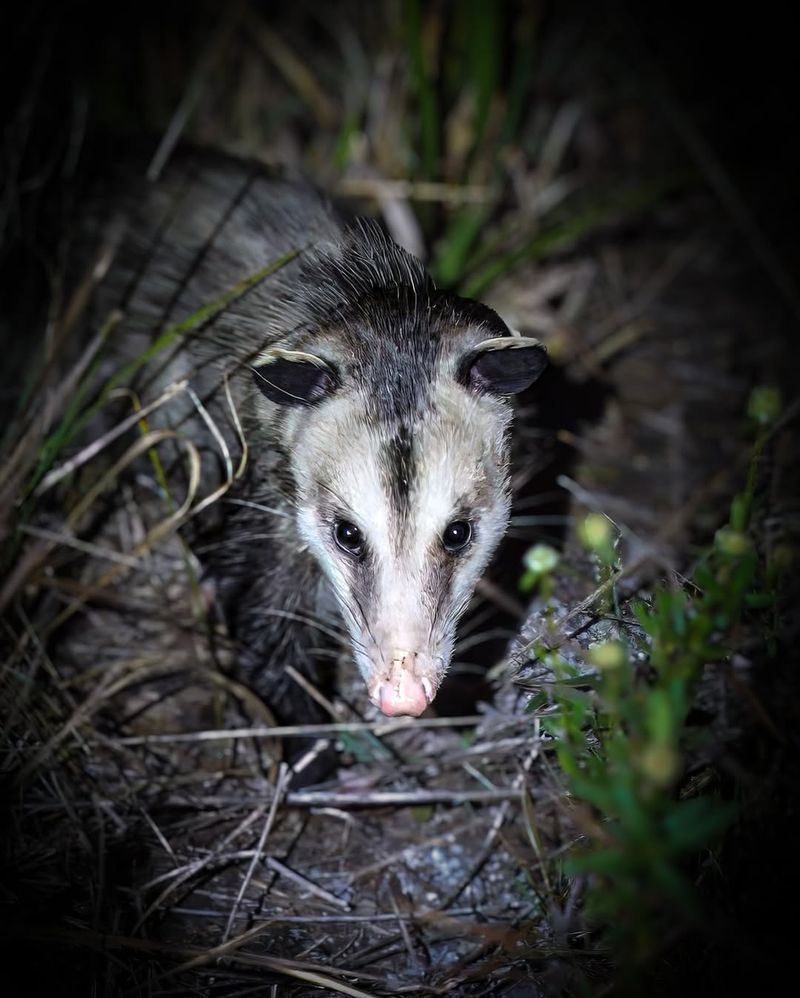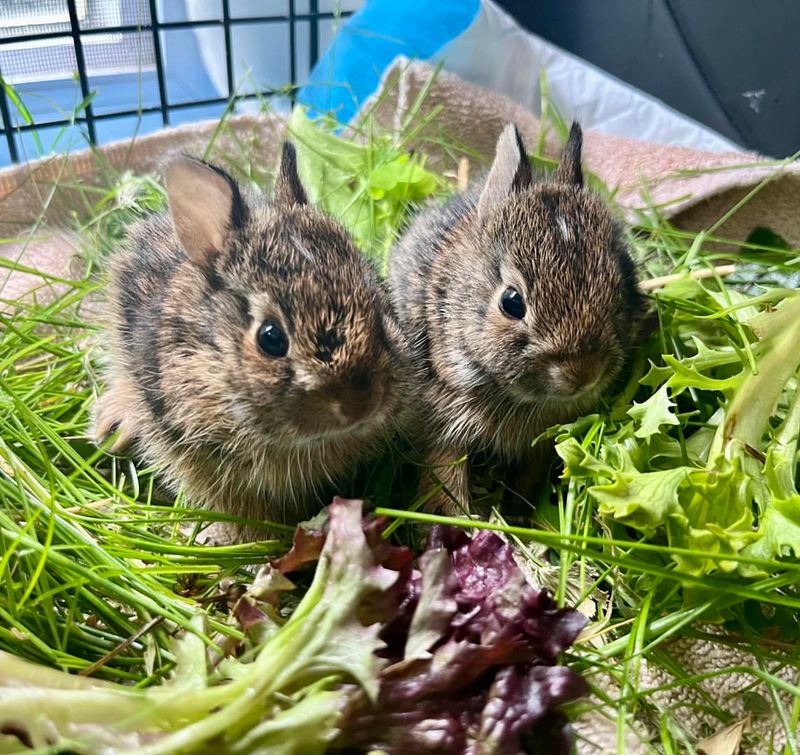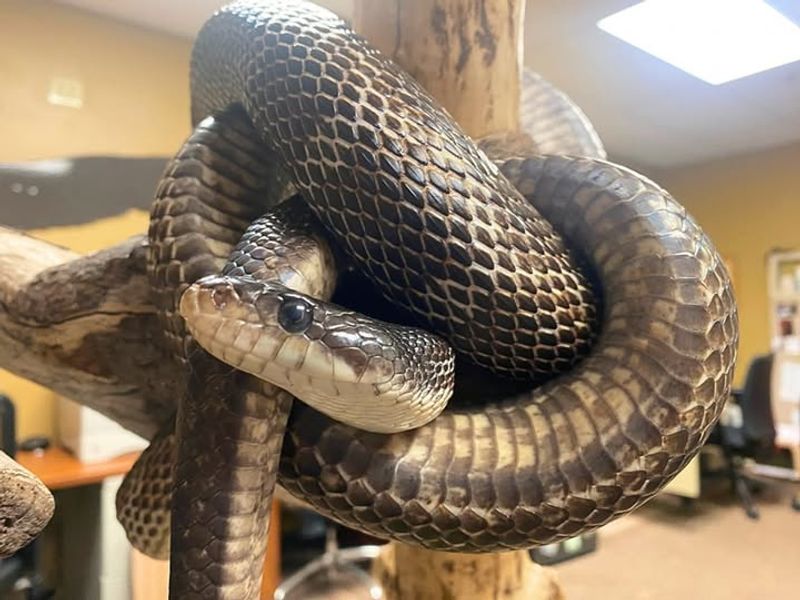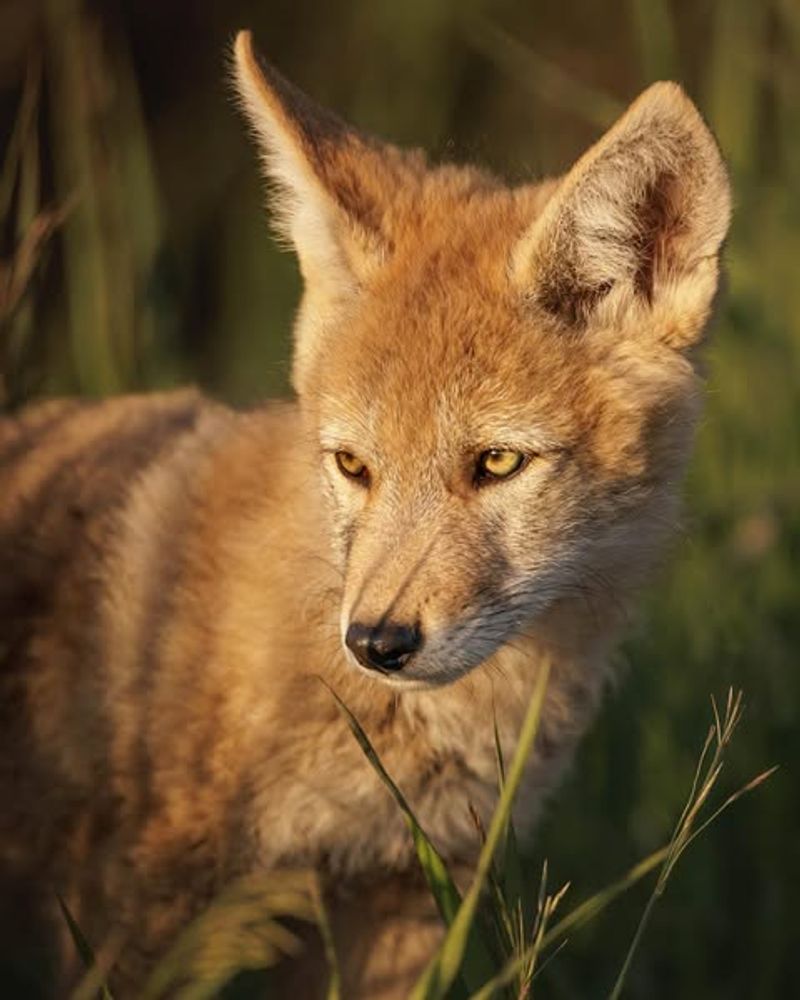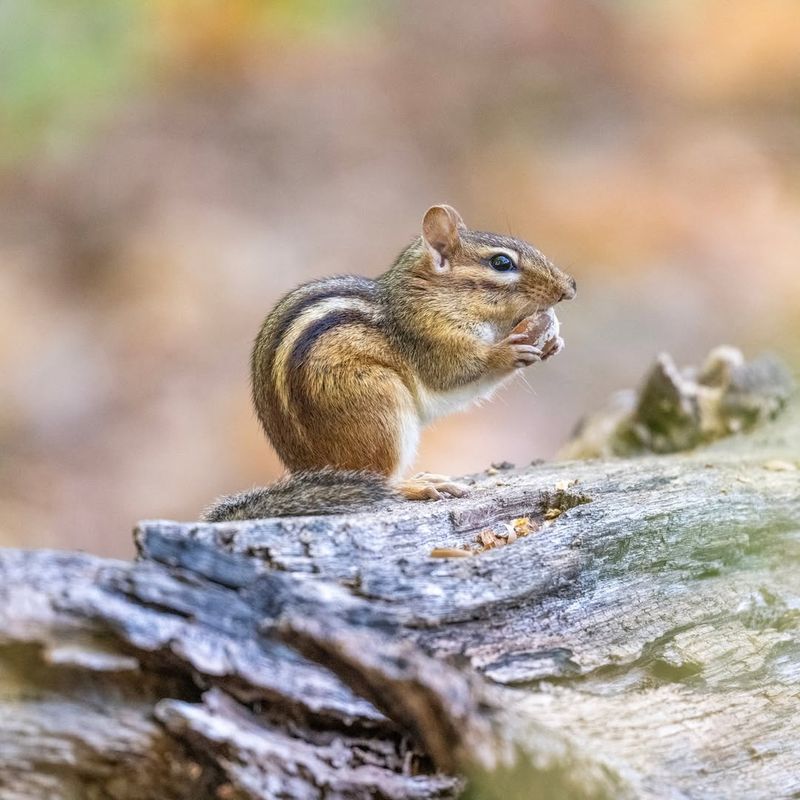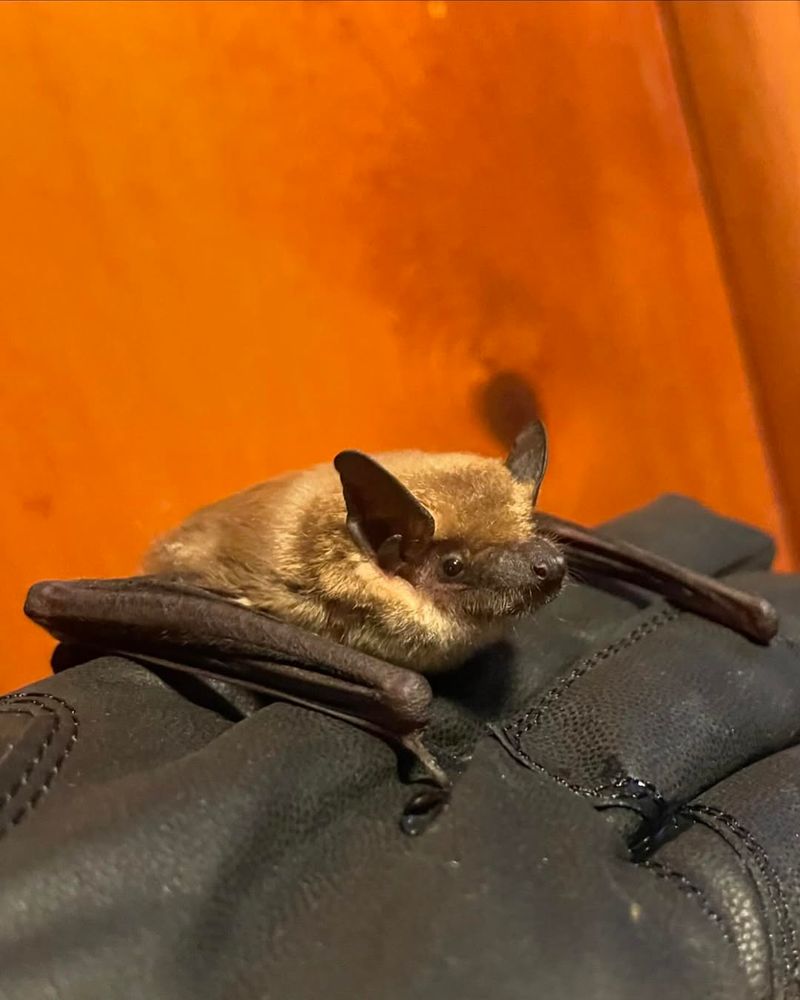Your Virginia neighborhood might feel like a typical suburban setting, but you would be surprised by the wild animals sharing your space. From backyards to local parks, all sorts of creatures have adapted to city life in ways most people never notice.
Learning about these urban wildlife neighbors helps you appreciate nature while staying safe and respectful of the animals around you.
1. Red Fox
With their bushy tails and striking reddish coats, red foxes have become surprisingly common in Virginia neighborhoods. Many people mistake them for stray dogs at first glance, especially during twilight hours when they are most active.
Foxes hunt small rodents, rabbits, and even raid garbage cans for easy meals. They den under porches, sheds, and in overgrown areas where they feel protected.
If you spot one, keep your distance and secure your trash. These clever animals rarely pose threats to humans but can become bold if fed.
2. White-Tailed Deer
Graceful and adaptable, white-tailed deer wander through Virginia neighborhoods like they own the place. You might see them munching on flowers, shrubs, and garden vegetables during early morning or evening hours.
Deer populations have exploded in suburban areas because natural predators are scarce and food is plentiful. They can damage landscapes and carry ticks that spread Lyme disease.
Installing tall fences and using deer-resistant plants helps protect your garden. Never approach or feed them, as they can become aggressive during mating season.
3. Eastern Gray Squirrel
Acrobatic and endlessly entertaining, gray squirrels are probably the most visible wildlife in Virginia neighborhoods. Their constant chatter and daring leaps from tree to tree make them hard to miss.
Squirrels collect nuts, seeds, and sometimes raid bird feeders with impressive determination. They build leafy nests high in trees and occasionally invade attics looking for cozy winter homes.
While mostly harmless, they can chew through electrical wiring and damage property. Trim tree branches away from your roof and seal any entry points to keep them outside where they belong.
4. Virginia Opossum
North America’s only marsupial, the Virginia opossum looks a bit strange with its pink nose and hairless tail. People often find them waddling through yards at night, searching for insects, fruits, and leftover pet food.
Opossums are famous for playing dead when threatened, a defense mechanism that actually works surprisingly well. They eat tons of ticks and help control pest populations naturally.
Despite their somewhat scary appearance, opossums are gentle and rarely bite. Just leave them alone and they will move on peacefully to continue their nightly rounds.
5. Eastern Cottontail Rabbit
Adorable and surprisingly bold, eastern cottontail rabbits have made Virginia lawns their personal salad bars. Their fluffy white tails bounce as they hop across yards, nibbling clover, grass, and prized garden plants.
Rabbits breed incredibly fast, producing several litters each year in hidden nests made of grass and fur. Baby bunnies often appear in spring, looking helpless but usually fine without human intervention.
Protect your vegetables with chicken wire fencing and avoid touching wild rabbits. They can carry diseases and parasites, plus handling them causes extreme stress to these delicate creatures.
6. Raccoon
Masked bandits of the animal kingdom, raccoons are notorious for their intelligence and mischievous nighttime activities. Those dexterous paws can open garbage cans, unlatch gates, and even turn doorknobs with practice.
Raccoons thrive in neighborhoods because food sources are everywhere, from trash bins to pet dishes left outside. They den in hollow trees, attics, and chimneys when given the chance.
Never corner or feed raccoons, as they can carry rabies and become aggressive when threatened. Secure your garbage with tight lids and bring pet food indoors after dark.
7. Black Rat Snake
Sleek and beneficial, black rat snakes are Virginia’s natural pest control experts. Growing up to six feet long, they might startle homeowners but actually help by eating rodents, birds, and other small animals.
Rat snakes are excellent climbers and often sun themselves on porches, decks, or stone walls during warm days. They are non-venomous and generally calm unless provoked or handled roughly.
If you find one near your home, simply give it space to leave on its own. Most snakes want nothing to do with humans and will slither away peacefully given the opportunity.
8. Coyote
Stealthy and adaptable, coyotes have expanded into Virginia neighborhoods over recent decades. Resembling medium-sized dogs with pointed ears and bushy tails, they hunt mostly at dawn and dusk when fewer people are around.
Coyotes feed on rodents, rabbits, fruits, and occasionally small pets left unattended outdoors. Their eerie howls at night often surprise residents unfamiliar with their presence nearby.
Keep cats indoors and supervise small dogs during walks, especially during twilight hours. Never leave pet food outside, and make loud noises if you encounter one to encourage it to leave your property.
9. Eastern Chipmunk
Tiny and hyperactive, eastern chipmunks dart around Virginia yards with cheeks stuffed full of seeds and nuts. Their distinctive stripes and cheerful chirping sounds make them easy to identify among other small wildlife.
Chipmunks dig extensive burrow systems under patios, sidewalks, and garden beds, sometimes causing structural issues. They hoard impressive amounts of food underground for winter survival.
While cute, avoid encouraging them to approach too closely or hand-feeding them. Chipmunks can bite when scared and may carry diseases that affect both humans and pets if direct contact occurs.
10. Great Blue Heron
Majestic and surprisingly urban, great blue herons visit Virginia neighborhoods with ponds or water features. Standing over four feet tall, these birds hunt fish, frogs, and even small rodents with lightning-fast strikes.
Homeowners with koi ponds often discover these skilled fishers have eaten their expensive decorative fish overnight. Herons are patient hunters who can stand motionless for long periods waiting for prey.
Protect backyard ponds with netting or motion-activated sprinklers to deter these beautiful but hungry visitors. Watching them from a distance offers an amazing wildlife experience right in your own neighborhood.
11. Big Brown Bat
Nighttime insect hunters extraordinaire, big brown bats patrol Virginia neighborhoods after sunset. Using echolocation, they catch mosquitoes, beetles, and moths with incredible precision while residents sleep peacefully below.
Bats often roost in attics, behind shutters, and under roof eaves where they feel safe and hidden. A single bat can consume thousands of insects nightly, providing free pest control services.
If bats enter your living space, open windows and turn off lights to help them escape. Never touch them with bare hands, and contact wildlife professionals if you discover a colony roosting inside your home.


